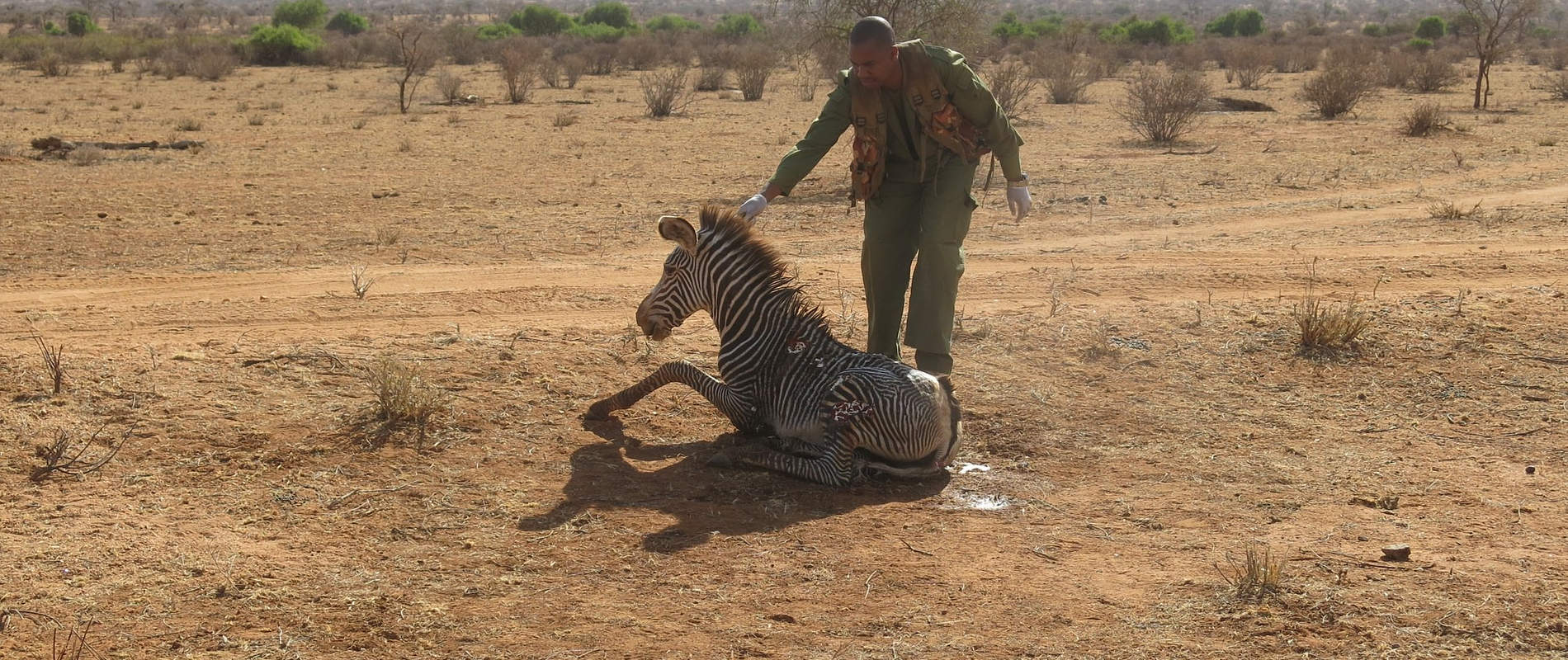Introduction This report describes the activities of the DSWT/KWS Meru veterinary unit operating in northern Kenya in August 2017
Introduction
This report describes the activities of the DSWT/KWS Meru veterinary unit operating in northern Kenya in August 2017. The unit’s staff was on leave and resumed duty on 16/08/17.
Weather conditions in most parts of northern Kenya remained dry. An increasing number of pastoral communities and livestock have also moved conservation areas in search of water and pasture. In MeruNational Park the unit responded to a report of a giraffe which had difficult birth and in Samburu national reserve a grevy zebra foal was treated for wounds. In OlPejeta Conservancy a post mortem examination was carried out on a black rhino calf.
We acknowledge the David Sheldrick Wildlife Trust which funds the unit to provide veterinary services for wildlife in northern Kenya.
- DYSTOCIA IN A GIRAFFE
Date: 17/08/17
Species: Reticulated giraffe
Sex: Female
Age: Adult
Location: Meru National Park
History
On 17/08/17, visitors on game drive in Meru National Park reported that a female reticulated giraffe had a dead fetus hanging on its birth canal. It was reported to be in poor body condition and recumbent. They requested for veterinary intervention to remove the dead fetus. However, the giraffe died before it was attended.
A post mortem examination showed that the fetus was on anterior presentation and dorsal flexion of the neck causing an obstruction in the birth canal. The dead fetus was putrefied and enlarged due to proliferation of gas forming bacteria. The immediate cause of death was toxemia.


- WOUND TREATMENT IN A GREVY ZEBRA FOAL
Date: 21/08/17
Species: Grevy zebra
Sex: Male
Age: 3 - 6 months
Location: Samburu National Reserve
History
Field officers from the Grevy Zebra Trust requested for treatment of wounds in a foal at Samburu National Reserve. The wounds were caused during an attack by a predator. The foal was in poor body condition, depressed and isolated from the rest of the herd. It was darted for examination and treatment on 21/08/17.


Chemical immobilization and examination
Immobilization was effected using Etorphine hydrochloride 1 mg and Azaperozetartate 30 mg combined in one intramuscular dart at 1540hrs.
There were large septic wounds on the lateral aspect of the left thigh, over the left shoulder and under the elbow which discharged copious amount of pus resulting in matting of hair especially on the left flank. Puncture wounds were observed on the left elbow suggestive of bite marks and lacerations on the dorsal aspect of the flank caused by claws.


Treatment and prognosis
The wounds were cleaned with water, debrided using dilute hydrogen peroxide and an antiseptic, povidone iodine applied. Opticlox was infused into the dead space in the wounds.Systemic treatment using Amoxicillin trihydrate 1500mgI.M, Dexamethasone 20mgI.M and 10ml multivitamin I.M. was given. Anesthesia was reversed at 1600hrs using Naltrexone hydrochloride 30mg intravenously at the jugular. One minute later the foal ran off to join the rest of the herd. We are hopeful that the wounds will heal after this treatment.


- POST MORTEM EXAMINATION OF A BLACK RHINO CALF
Date: 25/08/17
Species: Black rhino
Sex: Male
Age: Neonate
Location: Ol Pejeta conservancy
History
A new born black rhino was found dead in Ol Pejeta Conservancy. A post mortem examination showed lacerations on its back, a large wound in the abdomen opening in the abdominal cavity and internal organs were missing. This suggested an attack by hyenas.


















